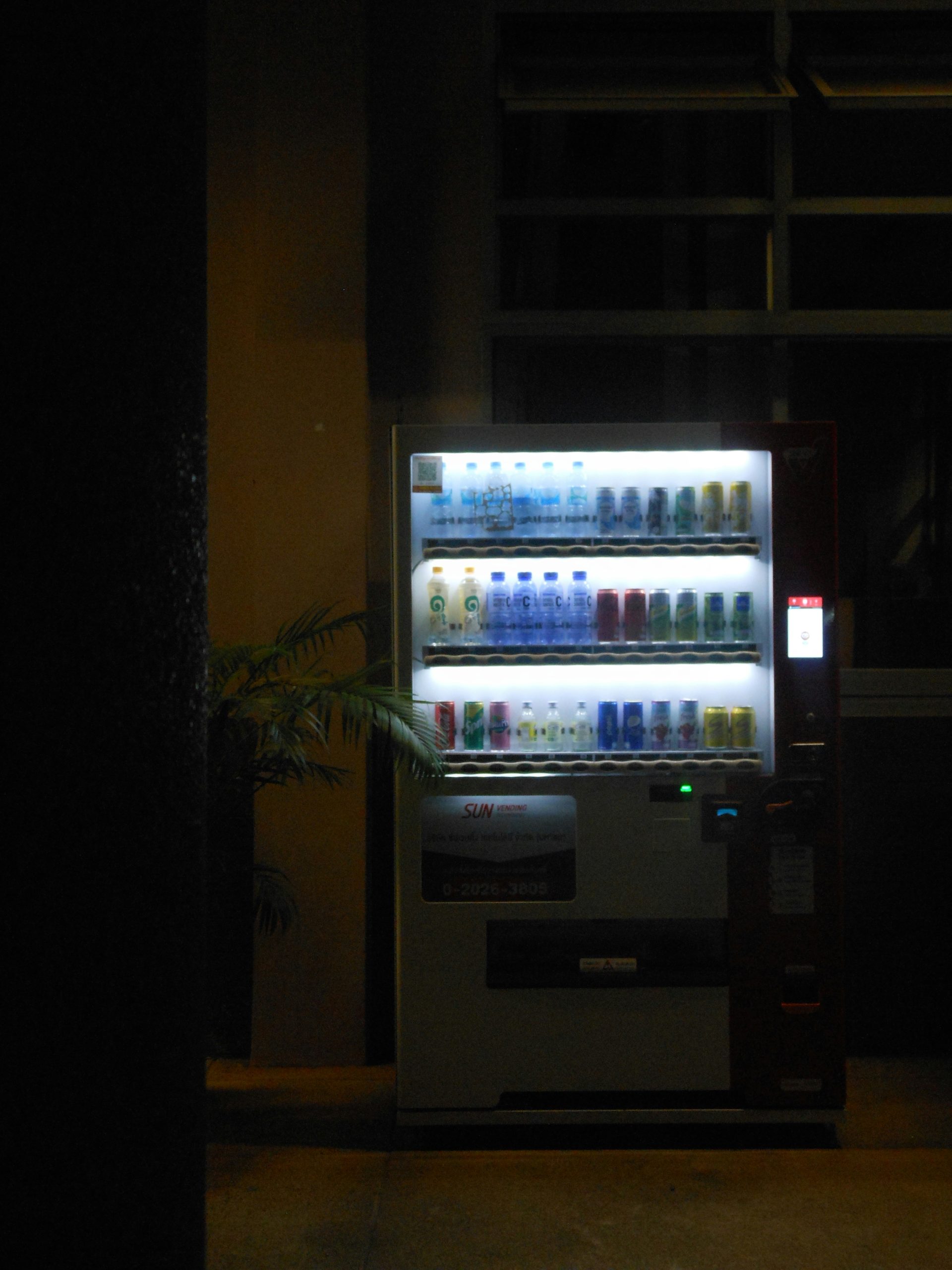
Starting a business often requires significant upfront investment, but vending machines offer a different path. This automated retail model can generate passive income without the overhead costs of traditional brick-and-mortar businesses.
The vending machine industry generates over $7 billion annually in the United States alone, with individual operators earning anywhere from $50 to $300 per machine monthly. While these numbers vary based on location and product selection, the low barrier to entry makes vending machines an attractive option for aspiring entrepreneurs.
This guide will walk you through everything you need to know about launching a vending machine business on a budget, from initial planning to scaling your operation.
Understanding the Vending Machine Business Model
How to setup vending machine business operates on a simple premise: place products in high-traffic locations and earn money through automated sales. Your profit comes from the markup between wholesale product costs and retail prices.
The beauty of this business lies in its scalability. You can start with one machine and gradually expand your fleet as profits allow. Unlike retail stores, vending machines don’t require staffing during operating hours, making them a true passive income source once properly established.
Key Revenue Factors:
- Location foot traffic
- Product selection and pricing
- Machine reliability and maintenance
- Seasonal demand fluctuations
Calculating Your Startup Costs
Starting a vending machine business requires careful financial planning. Here’s a breakdown of typical expenses:
Initial Equipment Investment
New Machines: $3,000 – $8,000 per unit
New vending machines come with warranties and modern features like cashless payment systems. However, they represent the largest upfront expense.
Used Machines: $1,200 – $3,000 per unit
Refurbished machines can cut startup costs by 50-70%. Look for units that are 5-10 years old with good maintenance records.
Lease Options: $100 – $300 monthly
Some suppliers offer lease-to-own programs, reducing initial capital requirements while building your equipment portfolio.
Additional Startup Expenses
- Business registration and permits: $200 – $500
- Initial inventory: $200 – $500 per machine
- Transportation and setup: $100 – $300
- Insurance: $500 – $1,500 annually
- Marketing materials: $100 – $300
Total estimated startup cost for one machine: $2,000 – $5,000
Choosing Your Vending Machine Type
Different machines serve different markets and require varying investment levels:
Snack and Beverage Machines
These traditional options work well in offices, schools, and waiting areas. They typically offer the most stable returns with familiar products.
Specialty Machines
Coffee machines, healthy snack options, or personal care items can command higher margins but may have more limited locations.
Bulk Vending Machines
Small capsule or candy machines require minimal investment ($100 – $500) but generate lower individual profits. These work well for testing locations or supplementing larger machines.
Finding Profitable Locations
Location determines your vending machine’s success more than any other factor. High-traffic areas with limited nearby competition offer the best opportunities.
Prime Location Types
Office Buildings: Steady weekday traffic with predictable patterns. Employees appreciate convenient access to snacks and drinks.
Schools and Universities: Large captive audiences, though you’ll need to comply with nutritional guidelines in many areas.
Hospitals and Medical Centers: 24/7 traffic from visitors, staff, and patients creates consistent demand.
Gyms and Fitness Centers: Health-conscious consumers willing to pay premium prices for appropriate products.
Laundromats: Customers spend 30-60 minutes waiting, creating natural purchasing opportunities.
Securing Location Agreements
Most locations require formal agreements outlining:
- Commission percentages (typically 10-25% of gross sales)
- Restocking schedules
- Maintenance responsibilities
- Contract duration and renewal terms
Prepare a professional presentation highlighting your business credentials, insurance coverage, and machine maintenance plans. Some locations may require proof of business registration and liability insurance.
Selecting the Right Products
Product selection directly impacts profitability. Research your target audience’s preferences while maintaining healthy profit margins.
High-Margin Product Categories
Beverages: Soft drinks, water, and energy drinks typically offer 50-70% profit margins.
Snacks: Chips, candy, and crackers provide 40-60% margins with long shelf lives.
Healthy Options: Protein bars, nuts, and dried fruits can command premium prices in appropriate locations.
Inventory Management Tips
- Start with 8-12 popular items rather than filling every slot
- Monitor sales data to identify top performers
- Rotate seasonal products to maintain customer interest
- Maintain 2-3 weeks of inventory to avoid frequent restocking trips
Operational Considerations
Successful vending machine operations require consistent attention to several key areas:
Maintenance and Servicing
Regular maintenance prevents costly breakdowns and ensures customer satisfaction. Create a schedule for:
- Weekly sales collection and restocking
- Monthly deep cleaning and inspection
- Quarterly mechanical servicing
- Annual safety and compliance checks
Cash Management
Implement secure procedures for collecting and counting money. Consider machines with cashless payment capabilities to reduce theft risk and increase sales potential.
Insurance and Legal Requirements
Protect your investment with appropriate insurance coverage:
- General liability insurance
- Product liability coverage
- Equipment insurance against theft or damage
- Business interruption insurance
Research local regulations regarding food handling, sales tax collection, and business licensing requirements.
Scaling Your Vending Machine Business
Once your first machine proves profitable, consider expansion strategies:
Reinvestment Strategy
Use profits from existing machines to fund new equipment purchases. This approach minimizes debt while steadily growing your business.
Location Diversification
Spread machines across different location types to reduce risk from seasonal fluctuations or economic changes affecting specific industries.
Technology Upgrades
Invest in machines with remote monitoring capabilities, cashless payment systems, and energy-efficient features to improve profitability and reduce operational costs.
Common Mistakes to Avoid
Learning from others’ experiences can save you time and money:
Choosing Poor Locations: Prioritize foot traffic over low commission rates. A busy location with higher fees often generates more profit than a cheap location with few customers.
Inadequate Market Research: Spend time observing potential locations at different times and days before committing to placement agreements.
Inconsistent Maintenance: Broken machines lose customers quickly. Establish reliable maintenance routines from day one.
Poor Product Selection: Stock items that match your audience’s preferences and spending patterns rather than your personal favorites.
Building Your Vending Empire
Starting a vending machine business with low capital requires patience, research, and smart financial management. Focus on finding one excellent location and proving your business model before expanding.
Success comes from understanding your customers, maintaining reliable equipment, and continuously optimizing your operations. With dedication and strategic planning, your single vending machine can become the foundation of a profitable business empire.
Take your first step by researching potential locations in your area and connecting with local vending machine suppliers. The sooner you start, the sooner you can begin earning passive income from this proven business model.
Consistency is key when growing your vending machine business. Regularly restocking your machine with popular, high-demand products and ensuring that it remains clean and operational will keep customers coming back. Pay attention to the feedback you receive from users, as it can guide you in tailoring your product offerings to better meet their needs. Additionally, monitor sales data to identify trends and make informed decisions about inventory and pricing.
Once you have established a steady income from your first machine, consider reinvesting your profits into acquiring additional machines. Expanding into new locations with high foot traffic, such as office complexes, schools, or gyms, can exponentially increase your revenue. With a proactive approach and a focus on customer satisfaction, your vending machine business can grow steadily over time.
Additionally, it’s important to stay updated on technological advancements in vending machines. Modern machines equipped with features like cashless payment options, touch screens, and real-time inventory tracking can significantly enhance the customer experience and optimize your operations. Investing in energy-efficient models can also help reduce operational costs while aligning with environmentally friendly practices. Regularly solicit feedback from your customers to better understand their preferences and adapt your product offerings accordingly. By continuously innovating and improving, you can maintain a competitive edge in the market and ensure the long-term success of your vending machine business.
Additionally, consider leveraging technology to streamline your business operations. Implementing remote monitoring systems can provide real-time insights into your vending machines’ inventory levels and performance, allowing you to respond quickly to issues and reduce downtime. Digital payment solutions, such as mobile wallets and contactless payments, can further enhance convenience for customers and attract a broader audience. By staying up-to-date with the latest industry trends and integrating innovative solutions, you can create a more efficient and customer-focused vending machine business.
Related Blog



